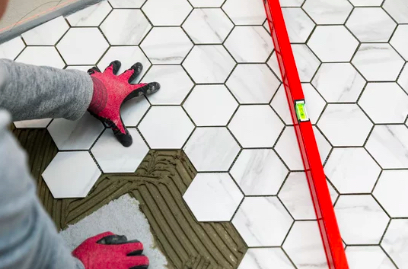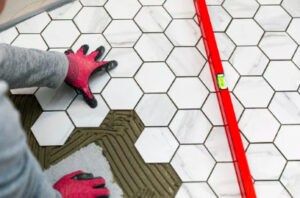Sophie Howard Reviews is a well-known Amazon seller and online business coach. She claims to have multiple-figure businesses under her belt.
She runs the Blue Sky Amazon training program and owns the private-label brand Higher Tea. She also has several successful Amazon e-stores, including one that sells incontinence products and another that sells wool products.

Sophie Howard has built a solid reputation in the online business world for her expertise in Amazon e-commerce. Her programs are designed to help entrepreneurs establish and grow their profitable businesses on the Amazon platform. While success ultimately depends on the individual’s efforts and dedication, Sophie Howard’s programs offer valuable insights and guidance.
Sophie began her career as a physical therapist and later decided to pursue entrepreneurship as a full-time endeavor. She used her knowledge of ecommerce to start an online business that sold tea and then wool products. Over the course of a few years, she was able to scale her business up to a level where it was making millions of dollars per month. She credited her success to the fact that she had the right skills and knowledge in place, which allowed her to find profitable products and build premium brands.
Today, she continues to teach others how to make money on the Amazon platform by offering her own online courses. Her flagship product, Blue Sky Amazon, has thousands of students enrolled. Her other courses include Product University and Amazon Navigator.
While it is true that the success of any online business ultimately depends on the individual, Sophie Howard’s programs do provide valuable insights into how to set up and grow an Amazon ecommerce business. She also offers a private Facebook group that provides her students with the support and resources they need to succeed.
It is important to note, however, that many of the same insights and strategies provided by Sophie Howard can be found for free on the Amazon website itself. Seller University is a free, constantly updated resource that offers much of the same information and guidance that Sophie’s courses do. As a result, it is important to consider whether or not her programs are worth the investment before signing up.
Overall, Sophie Howard is a legitimate business coach who has helped countless individuals to start and grow their own successful online businesses. Her knowledge of the Amazon platform and her strategies for creating and sustaining a successful Amazon ecommerce business are highly sought after. In addition, her Facebook group and other supporting materials are a great way to get help and support from fellow Amazon sellers.
Sophie Howard is a business coach that teaches entrepreneurs how to start and manage a profitable Amazon FBA (fulfillment by Amazon) business. She is known as the “Amazon Selling Queen” and has built several online businesses, including a seven-figure organic tea company. In addition, she founded Aspiring Entrepreneurs, an online platform that helps entrepreneurs find profitable products and build their own premium brands.
She claims to have helped over 10,000 people launch their own Amazon FBA business. She also provides coaching and consulting services. She has published several books and hosts a podcast about starting an online business. She also hosts events to help aspiring entrepreneurs.
Sophie’s Blue Sky Amazon course is designed to teach new Amazon FBA sellers how to get started with the program and grow their business. It is a comprehensive course that includes video tutorials, written materials, and access to a private Facebook group for students. The course typically costs $2,500 to $3,500, but there are payment plans available.
The first module of the course covers how to choose a product and set up a sales funnel. It also discusses how to create a business plan and determine whether the product is profitable. The second module covers the basics of managing an Amazon FBA business. It also explains how to source products from overseas suppliers.
In the third module, Sophie explains how to find long-term, unique products that can be sold for a profit on Amazon. She also talks about how to find products with a high MOQ (minimum order quantity) that can limit competition.
The fourth module focuses on how to hire virtual assistants and manage them effectively. This module is particularly helpful for beginners, as it explains how to find and hire the right VAs for each job. Sophie also recommends using a service that helps you manage and track your sales and revenue.
Sophie Howard is a bestselling author and popular speaker on the topic of Amazon FBA (fulfillment by Amazon). Her online business strategies have helped her build six and seven-figure incomes. Despite her success, her reputation has been questioned by some who doubt the authenticity of her testimonials.
Sophie is one of the most popular instructors in the FBA space, and she offers a variety of courses and webinars that can help new sellers get started on the platform. She also has a thriving Facebook group, which is a valuable resource for her students.
In her course, Sophie Howard teaches new FBA vendors how to find and source products that are both profitable and unique. She also provides tips on how to use Canva as a graphics design application and how to launch a Facebook ad campaign. She also explains the importance of cultivating a positive mindset.
The course consists of six modules that cover the basics of launching an FBA business. The first session focuses on how to select and source a product. It also includes tips on how to create a sales funnel. The next session explains how to set up a Facebook ad campaign and optimize your listing. Sophie also discusses the advantages and disadvantages of outsourcing.
Unlike most other FBA consultants, Sophie is an advocate of using third-party logistics providers. She claims that they can save you a lot of time and money. She also recommends that you start small and focus on building a profitable business before expanding. This way, you can avoid the risk of losing money if your business fails.
Sophie Howard is one of the most popular instructors of online courses. She claims to have multiple 7 figure Amazon businesses and a track record of helping her students start their own profitable online ecommerce business. However, despite her impressive credentials, some people are skeptical of her course. Some even wonder if she’s a scam.
The truth is that Sophie Howard has a proven track record of success. She has made tens of millions in the ecommerce space and has built many six-figure and seven-figure online businesses. She also founded Aspiring Entrepreneurs, a business coaching platform that offers courses on how to become an ecommerce entrepreneur.
She also has a number of high-quality testimonials that support her claim to be a legitimate and reputable instructor. Her course, Blue Sky Amazon, has received high ratings on sites like Udomy and HighIncomeSource, and is one of the most popular courses in the space. However, a closer look at these reviews reveals that some of the comments are fake.
Some of the positive reviews for Blue Sky Amazon appear to be from friends and family of Sophie Howard, or are from paid reviewers. This makes it difficult to determine if the course is worth your money. In addition, the site HighIncomeSource is known to promote other suspicious ecommerce courses.
In her course, Sophie teaches you how to source products from countries around the world that are not easily accessible. She explains how to find unique and long-term products that will sell well on Amazon. She also covers how to create product listings that catch the attention of potential customers.
Sophie also discusses the importance of networking and building relationships with other business owners. She also demonstrates the benefits of using social media to market your business. She also provides tips for avoiding common mistakes that new business owners often make. Overall, the course is a great resource for anyone who wants to learn how to launch their own successful ecommerce business.



